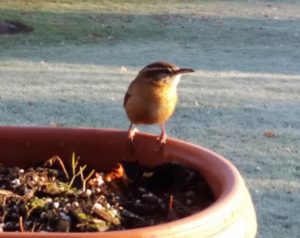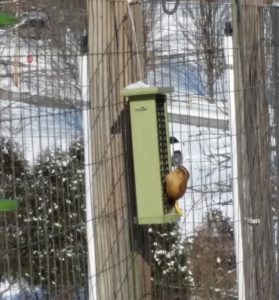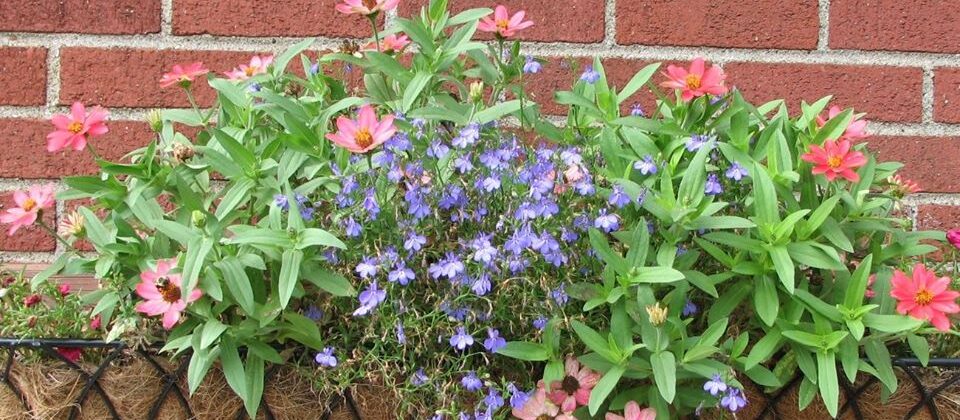
I have a book titled Backyard Birds of Pennsylvania which I drag off the bookshelf once in a while when I see a cute bird that I need to identify. I am pretty sure that the bird in my photo is a House Wren.
House Wrens have slightly curved bills, are brownish, have black lines on the wings and are under 5 inches with a wingspan up to 7 inches.
Also, House Wrens love to sing loud! I can attest to this. I was in the kitchen when I heard this cutie singing right outside the door in an empty planter box! This wren kept singing like he wanted an audience. I should have video tape him – maybe next time!
House Wrens like to eat insects and spiders. I have plenty of spiders in my vegetable garden to share!

House Wrens are cavity nesters and typically migrate south during the winter. I took a look at the website called Nest Watch which is written by the Cornell Lab of Ornithology. In case you don’t know ornithology is the scientific study of birds. This website shows that House Wrens are declining in the Northeast and Pacific Regions of the United States and suggests putting up a next box for these birds if you live in the appropriate nesting range which includes Pennsylvania. You can attach the nest box to a building, live tree, dead tree or a pole. The nest box should be placed between 5 and 10 feet above the ground. The entrance hole should be 1 inch. The main nesting period for House Wrens is from mid May to the beginning of August. For more information, check out the website.


